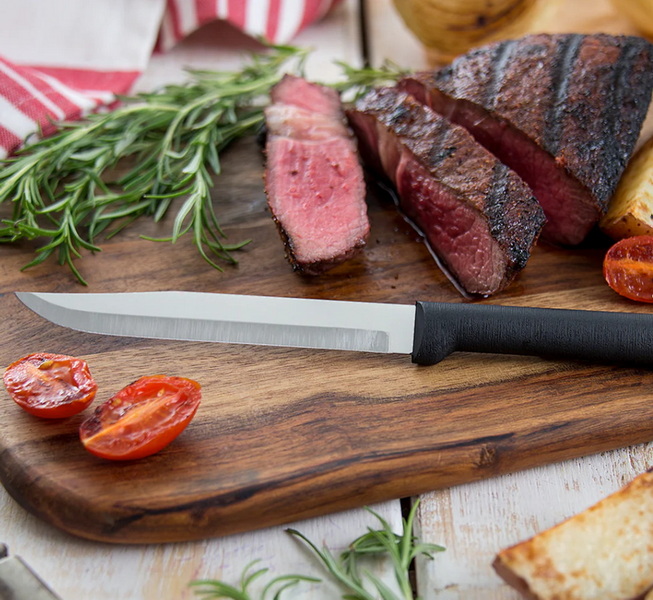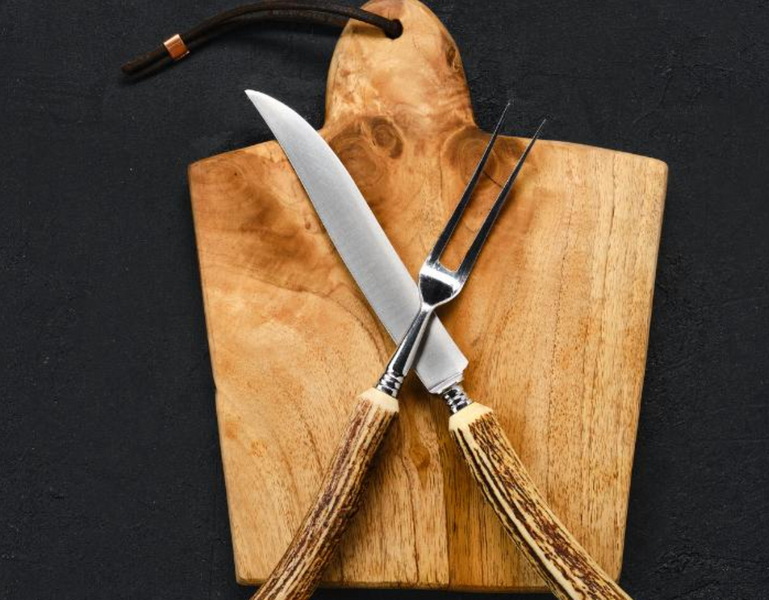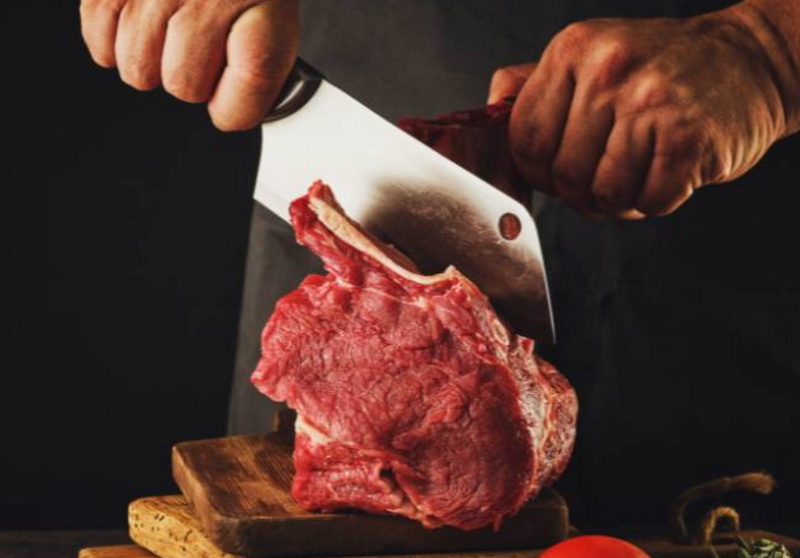Views: 222 Author: Ann Publish Time: 2025-10-31 Origin: Site











Content Menu
● What makes a steak knife durable and rust‑resistant?
● 1: Blade materials and their corrosion resistance
● 2: Heat treatment and its impact on rust resistance
● 3: Blade geometry, edge retention, and rust behavior
● 4: Surface finishes and protective measures
● 5: Handle materials and assembly integrity
● 6: Coatings, finishes, and OEM considerations
● 7: Practical testing you can implement
● 8: Maintenance guidelines to maximize rust resistance
● 9: How to evaluate a steak knife supplier for OEM projects
● FAQ
>> How do I identify rust‑resistant steak knives in a catalog?
>> Is corrosion resistance the same as rust resistance?
>> Can a steak knife made from carbon steel be rust‑free?
>> What maintenance practices maximize longevity?
>> How to select an OEM partner for rust‑resistant knives?
Steak knives are essential tools in any kitchen or dining experience. For OEM manufacturers and international buyers, choosing a steak knife that combines rust resistance with long‑lasting durability is crucial. This guide explains how to evaluate the rust resistance and overall durability of steak knives, covering blade materials, coatings, handle design, heat treatment, and real‑world performance.The emphasis on Steak Knife quality is particularly important for brand partners who seek reliable performance across diverse market conditions.

Durability and corrosion resistance are not defined by a single factor. They result from a balanced combination of material choice, manufacturing processes, and post‑production care. A well‑designed steak knife should maintain a sharp edge, resist staining and rust under typical kitchen or restaurant conditions, and withstand repeated cleaning cycles without integrity loss. For OEM projects, it is essential to translate these requirements into precise specifications, test protocols, and clear acceptance criteria.
- Material quality: The blade material determines corrosion resistance, edge retention, and toughness.
- Heat treatment: Proper hardening and tempering optimize hardness and resilience without becoming brittle.
- Coatings and finishes: Protective coatings can enhance rust resistance and reduce staining.
- Handle integrity: A secure, corrosion‑resistant handle prevents moisture ingress and loosening over time.
- Manufacturing controls: Consistent production processes, quality control, and inspection regimes ensure durable performance.
- Maintenance compatibility: The knife should tolerate common cleaning methods, including hand washing and, where appropriate, dishwasher cycles, without rapid degradation.
The blade material drives much of a steak knife's rust resistance and durability, but the interaction with heat treatment and finishing is equally important.
- Stainless steel grades commonly used for steak knives
- 420/420J2: Budget stainless with decent corrosion resistance but softer edge. Suitable for cost‑driven lines when paired with proper coatings and careful QA.
- 440C: Higher hardness and good corrosion resistance; holds edge well. A common choice for mid‑range premium knives.
- VG‑10: Superior edge retention and good rust resistance; commonly paired with Western or Japanese designs. Balances ease of sharpening with durability.
- M390, S35VN, and CTS‑XHP: Premium options offering excellent corrosion resistance and long‑term durability. Often used in high‑end OEM offerings for international brands seeking standout performance.
- Carbon steel with protective coatings
- Some steak knives use carbon steel for sharper edges but require coatings or meticulous maintenance to resist rust.
- When used, expect higher maintenance and more meticulous care requirements. For OEM programs targeting strict user environments, avoid carbon steel unless you can guarantee robust protective strategies and clear care guidance.
- Alloy considerations beyond stainless/windows
- Addition of chromium, vanadium, and molybdenum enhances corrosion resistance and wear. Nitriding and surface treatments can further improve surface hardness and reduce oxidation propensity.
- For knives intended for heavy restaurant use, consider a hardened core with a corrosion‑resistant outer layer to maximize performance.
Heat treatment defines the microstructure of steel, which in turn governs hardness, toughness, and corrosion behavior.
- Annealing, hardening, and tempering windows influence both hardness and corrosion susceptibility.
- Higher hardness can improve edge retention but may reduce toughness; a balanced approach (e.g., 58–62 HRC for many premium steak knives) often yields durable performance with adequate rust resistance.
- Cryogenic treatment can enhance wear resistance in certain alloys, contributing to durability over time.
- Surface hardening and controlled oxidation can create a protective layer that resists moisture ingress.
- Practical QA implications
- Document a target hardness range for each steel grade and verify with periodic sampling.
- Monitor uniformity across blades, ensuring no oversights that create localized corrosion susceptibility.
- Track the correlation between heat treatment, coating adherence, and measured rust resistance in post‑production tests.
Blade geometry influences both cutting performance and maintenance implications, which in turn affect rust propensity through usage patterns.
- Blade geometry and edge angles
- A well‑balanced blade with a bevel suitable for kitchen use provides reliable cutting while enabling easier maintenance.
- Sharper angles can demand more frequent sharpening and careful storage to prevent micro‑cracks that could harbor rust.
- Serrations vs. plain edges
- Serrated edges maintain cutting performance longer in some tasks but may trap moisture in grooves if not cleaned properly.
- Plain edges offer easier maintenance and more predictable rust resistance when properly honed and dried.
- Edge retention vs corrosion trade‑offs
- High‑quality alloys designed for edge retention typically also resist corrosion well, but improper care can still lead to rust.
- Regular sharpening not only preserves edge performance but also minimizes micro‑damages where rust can initiate.
- Practical guidance for OEM
- Specify edge geometry that supports consistent maintenance across end users.
- Align serrated vs plain edge choices with target market's cleaning habits and typical use cases.
- Include explicit sharpening guidelines and approved maintenance routines in product manuals.
Surface finishes and protective measures significantly influence rust resistance and long‑term aesthetics.
- Passive oxide layers and protective coatings
- Passivation, satin, and mirror finishes influence surface area exposed to moisture and oxygen.
- Coatings (e.g., PVD, DLC, ceramic) can enhance corrosion resistance but may impact sharpenability; OEMs should balance coating durability with maintainability.
- Micro‑abrasion resistance
- A smooth blade surface reduces places for moisture to linger, aiding rust resistance.
- Coating‑compatibility with food safety
- Ensure coatings meet food contact safety standards and do not degrade with typical cleaning agents.
- Coating thickness and adhesion
- Specify acceptable coating thickness ranges and adhesion test results to minimize peeling and exposure of base metal.

Handle design and assembly play pivotal roles in overall durability and moisture management.
- Handle materials with corrosion resistance
- G10, Micarta, and certain polymer composites offer good moisture resistance and lower maintenance.
- Wood handles can be treated for water resistance but typically require more care; ensure full tang construction and robust rivets for durability.
- Fasteners and scales
- Stainless steel rivets and full‑tang designs reduce the risk of loosening and corrosion at joints.
- Hygienic design
- Seamless or smoothly joined handles prevent moisture entrapment, aiding durability and ease of cleaning.
- Ergonomics and user experience
- A comfortable grip reduces mishandling and dropped blade incidents, indirectly contributing to longevity and safety.
Coatings and finishes are critical levers for rust resistance, particularly in OEM projects where branding and performance must align with end‑user environments.
- Coatings can dramatically improve rust resistance but must be compatible with food safety standards and sharpening methods.
- For OEM projects, specify coating thickness, adhesion tests, and post‑coating curing processes.
- Important tests for OEM suppliers
- Salt spray (ASTM B117) for corrosion resistance durability
- Rockwell hardness tests correlating to expected edge retention
- Bend and flex tests to simulate real‑world use
- Dishwasher safety simulations if applicable
- Environmental and regulatory alignment
- Ensure coatings and finishes comply with regional requirements (e.g., REACH, FDA, LFGB) to ease international distribution.
A robust testing regime helps differentiate your OEM steak knives in competitive markets and builds confidence with international buyers.
- Visual inspection checklist
- Look for uniform finish, absence of pitting, consistent edge geometry.
- Wet‑heat and humidity exposure
- Store samples in humid conditions to observe rust onset over time, simulating kitchen or restaurant environments.
- Simulated usage cycles
- Use a standardized steak slicing protocol to test edge durability and staining behavior under repetitive use.
- Cleaning and care simulation
- Run knives through typical cleaning regimes (hand wash vs dishwasher) to evaluate corrosion resistance under maintenance practices.
- Long‑term aging studies
- Plan accelerated aging tests to model performance over years of service, capturing changes in finish, handle integrity, and edge stability.
Maintenance practices dramatically influence the real‑world longevity of steak knives.
- Proper drying after use
- Wipe blades dry, then store in a dry environment to minimize moisture exposure.
- Regular oiling for certain finishes
- Light oiling on carbon steel or uncoated blades can create a temporary protective barrier against moisture and fingerprints.
- Gentle sharpening to prevent micro‑cracks
- Use appropriate sharpening methods and avoid aggressive over‑grinding, which can create micro‑cracks that trap moisture.
- Avoiding prolonged exposure to acidic marinades on unprotected blades
- If marinating, rinse and dry thoroughly before storage or use protective coatings where applicable.
- Storage considerations
- Consider knife blocks with moisture‑wicking features or magnetic bars that promote air circulation and reduce moisture buildup.
A disciplined supplier evaluation helps secure reliable performance and consistent quality across batches.
- Material traceability
- Ensure full batch documentation, alloy composition reports, and supplier certifications.
- Certification and food‑safe finishes
- Validate that finishes meet regional food safety standards and provide documented test results.
- Consistent heat treatment protocols
- Require detailed heat treatment logs and process controls with acceptance criteria.
- Comprehensive QC and testing data
- Obtain batch‑level inspection reports, hardness tests, coating adhesion tests, and visual defect checks.
- After‑sales service and replacements
- Confirm warranty terms and replacement policies to support brand partners in international markets.
- Production scalability for bulk orders
- Review lead times, capacity planning, and contingency strategies to meet large, time‑bound orders.
Choosing a steak knife with robust rust resistance and durable performance involves a holistic assessment of blade material, heat treatment, coatings, handle design, and manufacturing quality control. For OEM projects, align material specifications, coating options, and rigorous testing with your client's application, whether in consumer homes or professional settings. With the right combination of steel grade, protective finishes, and reliable assembly, your steak knife line can deliver consistent performance, ease of care, and long‑term value.

- Look for explicit mentions of stainless steel grades (e.g., 440C, VG‑10, M390), coating details, and dishwasher safety notes. Check for disclosures about passivation and any post‑treatment finishes.
- They're related but not identical. Rust resistance is influenced by alloy composition, surface finish, coatings, and maintenance habits. A knife can be corrosion resistant yet show minor staining if not cared for properly.
- It can be highly rust‑resistant with protective coatings and careful maintenance, but carbon steel generally requires more diligent care to prevent rust over time.
- Dry after use, hand wash when possible, apply light oil to certain finishes, and sharpen with a suitable method regularly. Store in a dry environment and follow manufacturer care guidelines.
- Prioritize material certification, documented heat treatment processes, coating specifications, QC data, and a track record with international brands. Ensure they can provide traceable testing data and scalable production.
The Ultimate Professional Knives for Halal Butchery in Middle Eastern Kitchens
Chef Knife Size Guide: Choosing Between 6″, 8″, 10″, And 12″
Custom Knife Handles: How To Design A Chef Knife That Fits Your Hand Perfectly
Chef Knife Surface Treatments Guide: From Polished Migaki To Damascus Patterns
Inside Our Professional Knife Sample Room: Quality You Can See
Universal Knife Block Buying Guide: Modern Acrylic & ABS Knife Holders for Professional Kitchens
Universal Knife Block: The Complete Guide To Modern, Hygienic Knife Storage
The Complete Guide To Red Handle Knife Sets: Style Meets Functionality in The Kitchen
Professional Knives for Halal Butchery And Middle Eastern Cuisine